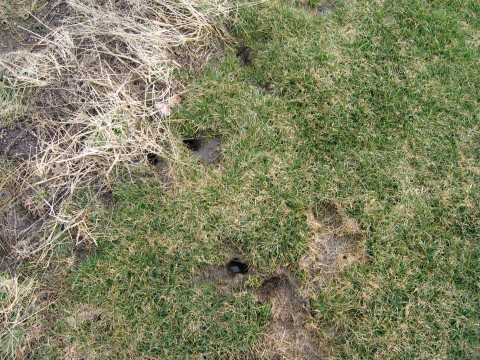Comprehensive Vole Pest Control Services in Utah
Comprehensive Vole Pest Control Services in Utah
Blog Article
Comprehensive Overview to Effective Vole Insect Control: Invasion Identification and Treatment Methods
In the world of effective bug control, vole problems posture a distinct obstacle that demands a strategic method. These tiny rodents, usually incorrect for computer mice, can ruin gardens, grass, and plants if left uncontrolled. Determining the indicators of vole existence and executing targeted treatment methods are necessary parts of a successful insect monitoring strategy. By exploring the subtleties of vole behavior, comprehending crucial signs of invasion, and evaluating a variety of control options, one can establish a comprehensive technique to battle these evasive insects.
Understanding Vole Habits
Vole habits is defined by their tunneling routines and quick reproduction prices, making them a tough pest to control successfully. These little rodents usually develop complex passage systems underground, utilizing them for shelter, food storage space, and transportation. Voles are herbivores, taking in a selection of plants, roots, bulbs, and turfs, which can trigger considerable damage to yards, orchards, and yards. Their fast reproductive rate more complicates control efforts, with females with the ability of producing several clutters in a solitary year, each having numerous offspring.
Voles are most active during the very early morning and evening hours, spending the bulk of their time foraging for food. Their delving behaviors not just disrupt grass and gardens yet likewise make them challenging to get rid of and identify. Recognizing vole behavior is essential for efficient bug control methods. By identifying their burrow areas, keeping an eye on feeding locations, and executing targeted control techniques, such as capturing or environment alteration, vole problems can be managed effectively.
Indicators of Vole Problem

Avoidance Techniques
Implementing effective prevention strategies is essential in decreasing vole invasions and guarding plants from their destructive feeding practices (vole control). To stop vole problems, it is necessary to start by getting rid of prospective food sources and sanctuary. Keep turf and plants cut short, remove weeds and debris, and maintain a clean yard or yard to make the area less eye-catching to voles. Mounting obstacles such as hardware towel or underground secure fencing can also help hinder voles from entering specific areas. Furthermore, minimizing excess dampness by fixing dripping pipes and guaranteeing proper drainage can make the setting less welcoming for voles.
Consistently evaluating the property for indications of vole task, such as paths and tunnel openings, is essential for early discovery and punctual activity. If vole task is believed, think about utilizing repellents or catches tactically put near their paths. Employing natural killers like owls or serpents can likewise help maintain vole populaces in check. By applying a mix of these avoidance house owners, garden enthusiasts and approaches can successfully secure their vegetation why not check here from vole damages.
Non-Lethal Control Approaches
To effectively take care of vole populaces while focusing on humane approaches, non-lethal control approaches provide useful remedies for decreasing vole damage in yards and landscapes. One effective method is using physical obstacles such as equipment fabric or cable mesh to protect susceptible plants. These barriers can be hidden at least 12 inches curved and deep at a 90-degree angle to avoid voles from tunneling beneath. In addition, environment modification can deter voles by reducing their favored food sources and concealing places. Keeping a well-mowed yard, getting rid of particles, and maintaining vegetation trimmed can make the setting less attractive to voles.

Lethal Control Options
One efficient approach for addressing vole problems in gardens and landscapes includes the strategic use of dangerous control options. When confronted with a severe vole problem that non-lethal approaches have stopped working to contain, applying dangerous control steps comes to be essential. One typically used dangerous control choice is making use of breeze traps. These catches are developed to promptly and humanely eliminate voles upon activation, making them a preferred option for numerous garden enthusiasts and landscaping companies. To boost the efficiency of snap traps, it is advised to put them in areas where vole activity is high, such as along runways or near burrow entrances. One more lethal control option is the use of hazardous baits especially developed to target voles. These lures consist of toxin that is consumed by the voles, leading to their eventual death. However, care needs to be exercised when using harmful lures to avoid injury to non-target animals or pets. Generally, when using lethal control options, it is important to do so sensibly and based on neighborhood guidelines to effectively take care of vole infestations.
Final Thought
To conclude, efficient vole bug control calls for a detailed understanding of vole habits, identification of indicators of invasion, implementation of prevention approaches, and utilization of both non-lethal and deadly control approaches. By integrating these methods, people can successfully take care of vole populaces and shield their building from damages. It is very important to deal with vole infestations immediately to stop further concerns and decrease the effect on the surrounding setting.
Provided the intricate tunnel systems and quick recreation rates characteristic of voles, acknowledging the indicators of vole infestation becomes essential in effective pest control. One of the key signs of vole existence is the visibility of surface paths or tracks in grass or snow, generally about 1-2 inches vast, produced as voles take a trip between their burrows and food sources.To properly manage vole populations while prioritizing humane techniques, non-lethal control methods use practical options for decreasing vole damages in landscapes and gardens.One reliable method for addressing vole infestations in landscapes and yards entails the tactical usage of deadly control choices. vole pest control.In conclusion, effective vole parasite control calls for a comprehensive understanding of vole behavior, identification of indications of invasion, execution of prevention strategies, and utilization of both non-lethal here and deadly control approaches
Report this page